News
WHY BUY SEAFOOD FROM VIETNAM
Update: 4/9/2017WHY BUY SEAFOOD FROM VIETNAM
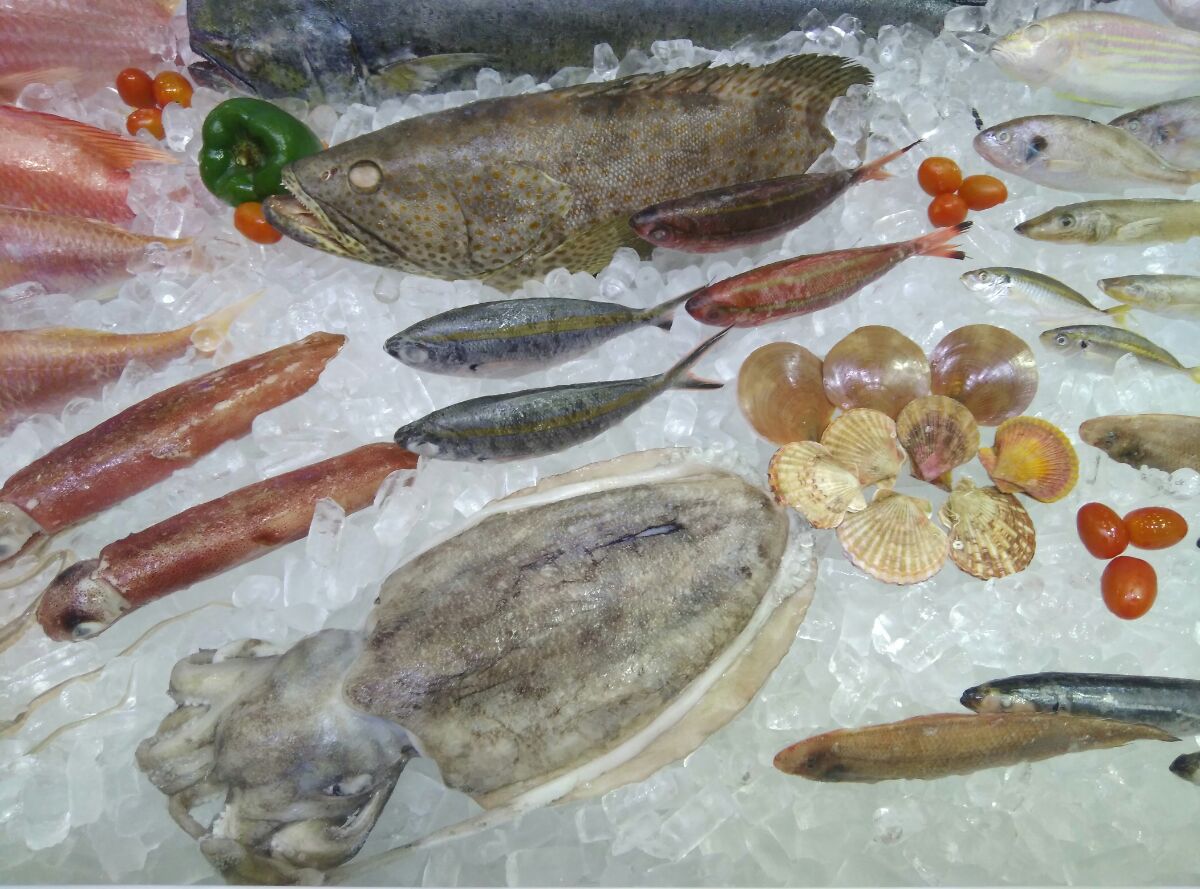
Vietnam, with a coastline of over 3,260 kilometers (km) and more than 3,000 islands and islets scattered offshore, plus up to 2,860 rivers and estuaries, has been geographically endowed with ideal conditions for the thriving fishery sector which currently exists.
Great potential of fishery sector in Vietnam is embedded in water bodies of 1.700.000 ha in which 811.700 ha freshwater, 635.400 ha brackish waters and 125.700 ha coves and 300.000 - 400.000 ha wetland areas might be employed for aquaculture development.
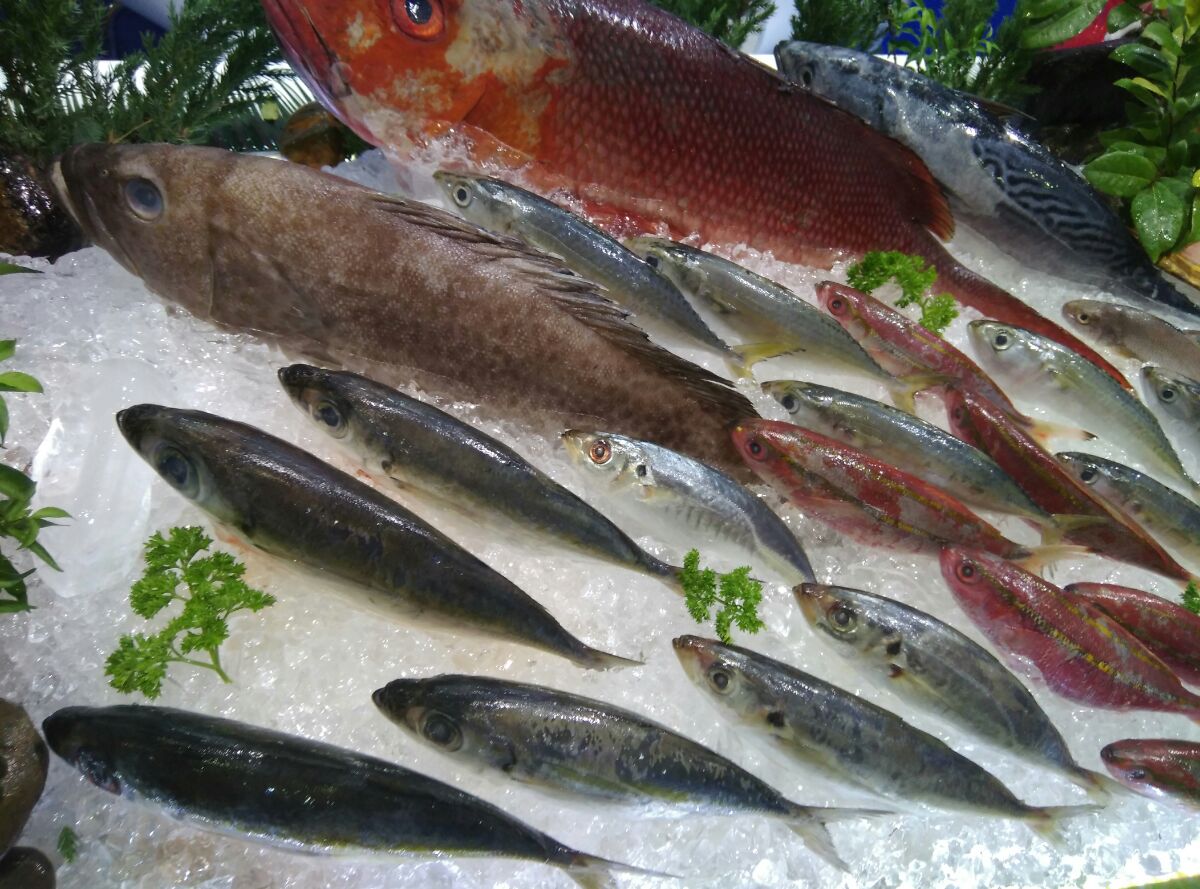
The Mekong River Delta in the south and the Red River Delta in the north have been used for wild catch fishing as well as extensive fish farming.
Shrimp and pangasius mostly farmed in the Mekong River Delta, in which, shrimp farmes located in coastal provinces such as Tra Vinh, Bac Lieu, Soc Trang, Ca Mau, Kien Giang, Ben Tre..
Pangasius farming is developing in many provinces in Mekong River Delta such as Can Tho, Vinh Long, Tien Giang, An Giang, Dong Thap, Soc Trang, Hau Giang, Tra Vinh....
Production in the fishery sector grew at an average rate of 7.05% from 1991 to 2000, and 10% from 2001 to now. The country produces annually over 6 million MT of fish, in which its landings reached 2.7 million MT and aquaculture reached 3.3 million MT. In 2015, total fisheries production reached 6.56 million MT, including 3.03 million tons from catching and 3.53 million tons from aquaculture.
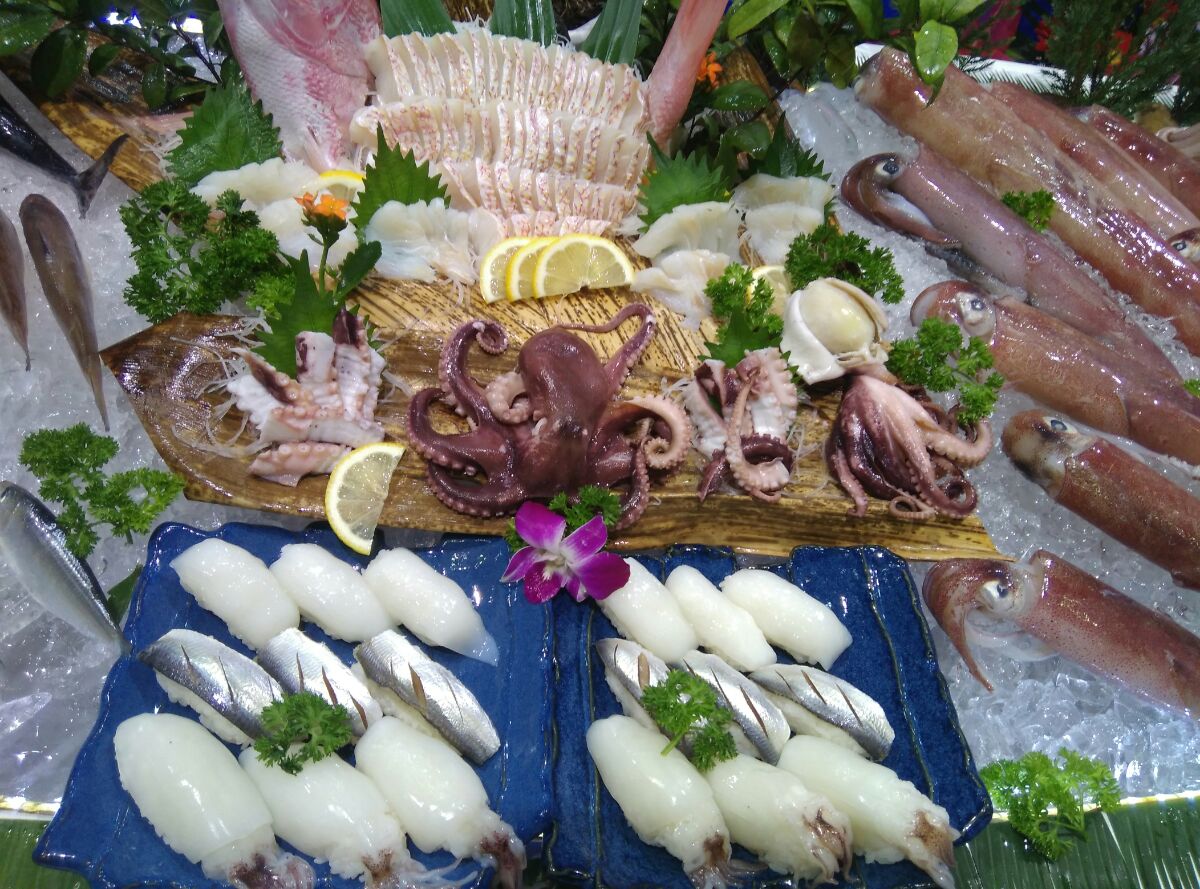
Food safety
Quality control
Quality control and food safety assurance have always been one of the most important task for Vietnam seafood, especially in processing and exporting.
The fishery sector in recent years have been developing towards sustainability, ensuring exported seafood products can be easy for traceability and well – controlled quality in the whole chain production from seeds to finished products.
Seafood quality and food safety is managed in the chain transferred from Control of Final Products from 80s of last century to Control of Production Process (today).
Chemicals and Residues Monitoring
Residues Monitoring Program for Certain Harmful Substances in aquaculture fish and products implemented since 2000 in over the country including concentrated aquaculture areas, species with large yield, all crops in all year round. These results are recognized by the U.S, EU, South Korea..
Post harvest seafood quality and safety monitoring program implemented since 2009 in over the country including fishing seafood, aquaculture products (criteria and species not included by the Residues Monitoring Program for Certain Harmful Substances in aquaculture fish and products).
Up to December 2015, there are 612 plants meeting national standards of hygiene, 100% plants applied HACCP, 461 EU-qualified (EU code) plants and many factories applied GMP, SSOP.
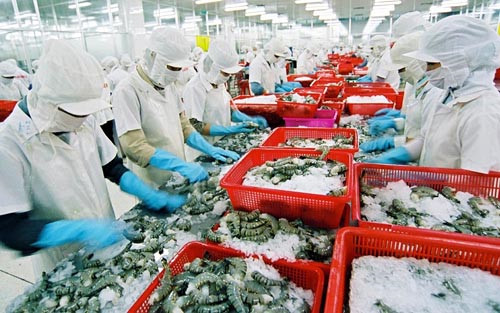
List of Vietnam seafood producers qualified to export to markets
|
List of Vietnam seafood producers qualified to export to markets (Updated: Nov 2015) |
|||
|
No |
Export markets |
Update time |
Proposed update time |
|
1 |
6 Jan 2016 |
26 Jan 2016 |
|
|
2 |
2 Feb 2016 |
26 Jan 2016 |
|
|
3 |
1 Feb 2016 |
26 Jan 2016 |
|
|
4 |
22 Dec 2015 |
|
|
|
5 |
28 Jan 2016 |
|
|
|
6 |
9 Jan 2014 |
|
|
|
7 |
Eurasian Economic Union (Russia, Kazakhstan, Belarus, Armenia, Kyryzstan) |
21 Jun 2015 |
|
|
8 |
|
7 May 2010 |
|
|
9 |
8 Dec 2015 |
|
|
|
10 |
List of seasoned dried leather jacket fish processors exporting to Korea |
25 Dec 2015 |
25 Dec 2015 |
|
11 |
The list of exporters qualified for food safety assurance (updated by Vietnam customs) |
2 Feb 2016 |
|
|
12 |
List of processors eligible in exporting pangasius to the US. |
9 Mar 2016 |
|
Certification
Up to December 2015, many sustainable certifications are implemented by aquaculture sector in Vietnam.
BAP: Vietnam get total of 132 BAP certified facilities including 51 certified 4-star, 28 certified 3-star, 23 certified 2 star, 12 certified 1 star.
Vietnam has 19 shrimp companies certified 4-star BAP standard in total 51 companies certified 4-star BAP standards in over the world.
ASC: There are 40 pangasius farms certified ASC, 19 ASC-certified farms for shrimp, 4 ASC certified farm for tilapia.
Global G.A.P: Many companies certified.
Export potentialse
In Vietnam, the fishery sector plays an important role in the national economy, accounting for about 4-5 percent of Gross Domestic Product (GDP) and about 9-10% of national export revenue.
More than 4 millions of people working in the fishery and the growth in production have attributed to the fish exports. Thanks to strongly increase in many years, Vietnam ranks among the top ten seafood suppliers and its seafood products are exported to 170 markets in the world.
Shrimp, pangasius, tuna, squid and octopus are main seafood products exported by the country. In which, shrimp exports create about US$ 3.5 – 4 billion, make up 46-50% of the total seafood sales of Vietnam. Earnings from pangasius reached at US$ 1.7 – 1.8 billion (25% of the total) and exports from Tuna and Cephalopods are US$ 450 – 550 million for each.
Exports to the U.S, Japan, EU, China and South Korea make up 75% of Vietnam’s seafood sales to the wolrd.
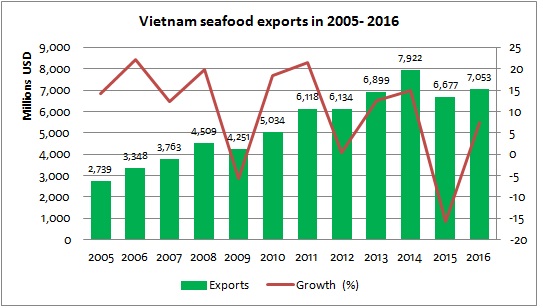
5 advantages for Vietnam seafood exports:
(1) High commitment and participation from Government, Industry and companies for food safety, environment and social responsibility;
(2) Able to supply the big volume and safe quality and stable seafood products;
(3) Meet all the customers’ requirements, incl. the vertical linkage (integration) for each species sector;
(4) Vietnam is one in few countries in the world which has the good and stable labor resource;
(5) Vietnam has Agreements / FTAs with many countries and territories and has advantages both in product quality and im-ex tax.
follow http://seafood.vasep.com.vn












